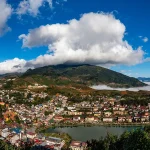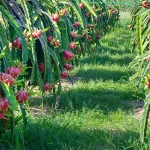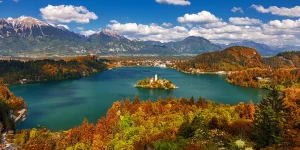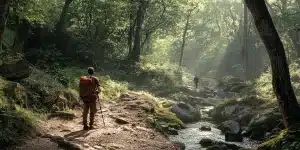Planning your travels for 2026? This guide won’t help you narrow down the list — but it will absolutely expand your horizons. Our four-part series on the best countries to visit in 2026 embraces the beautiful chaos of the world map — because true wanderlust rarely fits inside tidy borders.
This list is not organized alphabetically, by region, or by popularity — it’s intentionally mixed, because we believe that some of the most valuable discoveries are the ones you weren’t actively looking for. Let your own curiosity draw the map, connect the dots, and discover which destinations speak to you most deeply.
So take a deep breath, open your mind, and dive into the first part of our journey through all 193 countries. Welcome to the Wonder of the Wildcard.
Philippines – 7,000 Islands That Speak Your Language
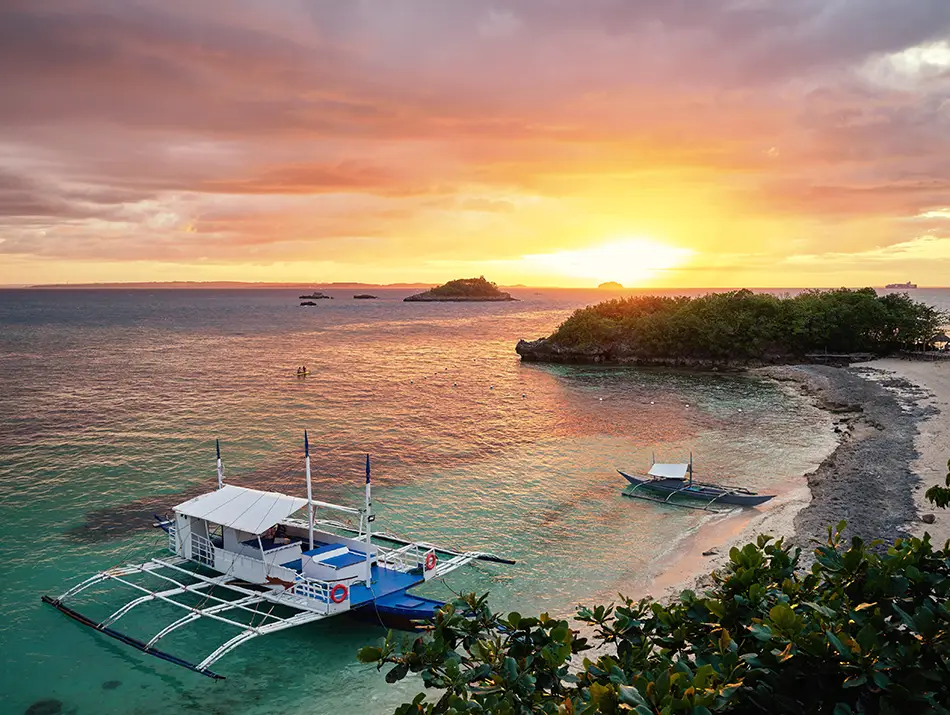
🏆 The Best Adventure Country for 2026
The Scene: An easy-to-navigate archipelago of 7,641 islands, where locals switch from English to their own dialects with the same smile.
Famous For: White-sand coves, diving sites, and festivals powered by drums and rain.
Local Quirk: Pointing with your lips is perfectly polite here.
Unusual Bite: Balut — a fertilized duck egg eaten warm, straight from the shell.
The Philippines moves at the rhythm of the tide. One hour you’re weaving through Manila traffic; the next, ferries carry you toward islands where tricycles are the only wheels in sight. Volcanoes shape the horizon, karaoke shapes the night, and Catholic churches stand beside coconut stalls.
Travelers come for beaches and terraces but stay for how easy it feels. Meals appear from nowhere, strangers offer rides, and every stop becomes part of the trip. Travel takes time, but it never feels wasted.
Bolivia – Between the Clouds and the Salt
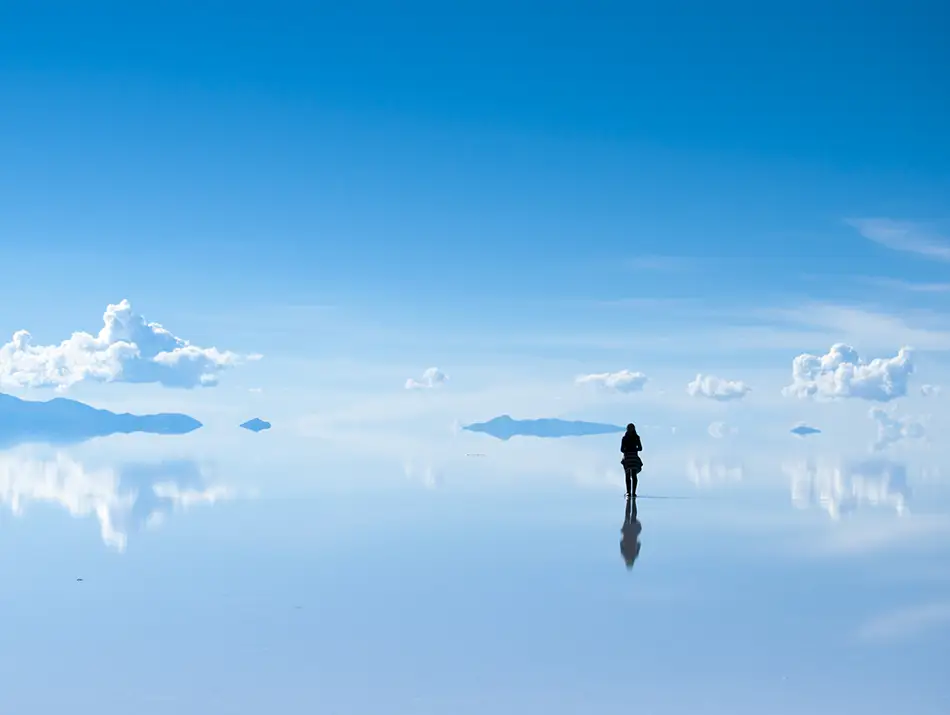
The Scene: Life unfolds at high altitude — La Paz city sits nearly 12,000 feet (~ 3,650 meters) above the sea.
Famous For: Salt flats that mirror the sky, llamas, and markets spilling down steep streets.
Local Quirk: Coca leaves are chewed to fight altitude and start conversation.
Unusual Bite: Salteñas — sweet-spiced meat pastries sealed so tightly they burst if you bite wrong.
Bolivia feels carved from extremes. Mountain towns cling to cliffs while jungle roads drop toward the Amazon. In the markets, women in bowler hats sell potatoes by the dozen varieties, and buses paint saints and soccer heroes side by side.
Visitors come for the kind of scenery that doesn’t repeat: Uyuni’s mirrored desert after rain, colonial Potosí gleaming in thin sunlight, and Lake Titicaca glowing cold blue. Transport can be slow, but rewards come with altitude — every view earned, every horizon honest.
San Marino – Europe’s Tiny Time Capsule
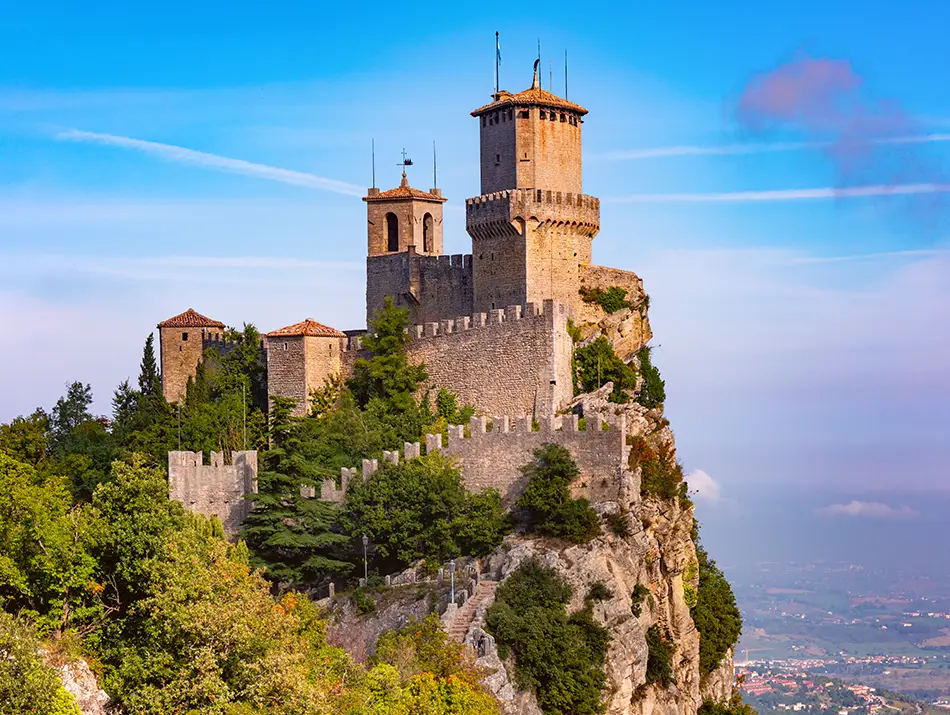
The Scene: A hilltop republic surrounded entirely by Italy, smaller than most airports.
Famous For: Stone towers, steep lanes, and views stretching across the Adriatic plain.
Local Quirk: The country changes its two heads of state twice a year — a 13th-century idea still protecting its tiny democracy.
Unusual Bite: Torta Tre Monti — wafer layers of chocolate and hazelnut named after the country’s three peaks.
San Marino looks like a stage built for a medieval movie. Flags ripple above fortress walls, shop signs shine in three languages, and cobblestones slope toward cafés perched on the edge of clouds. By evening, the day-trip crowds vanish, leaving bells and wind.
It’s a short trip from Rimini, Italy’s Adriatic resort city, yet feels a world apart. The museums are small but polished, and the pace forces you to slow to medieval speed. Stay the night and watch fog roll across Italy — when the crowds leave, San Marino feels like it’s floating above everything.
Montenegro – The Black Mountain by the Blue Bay
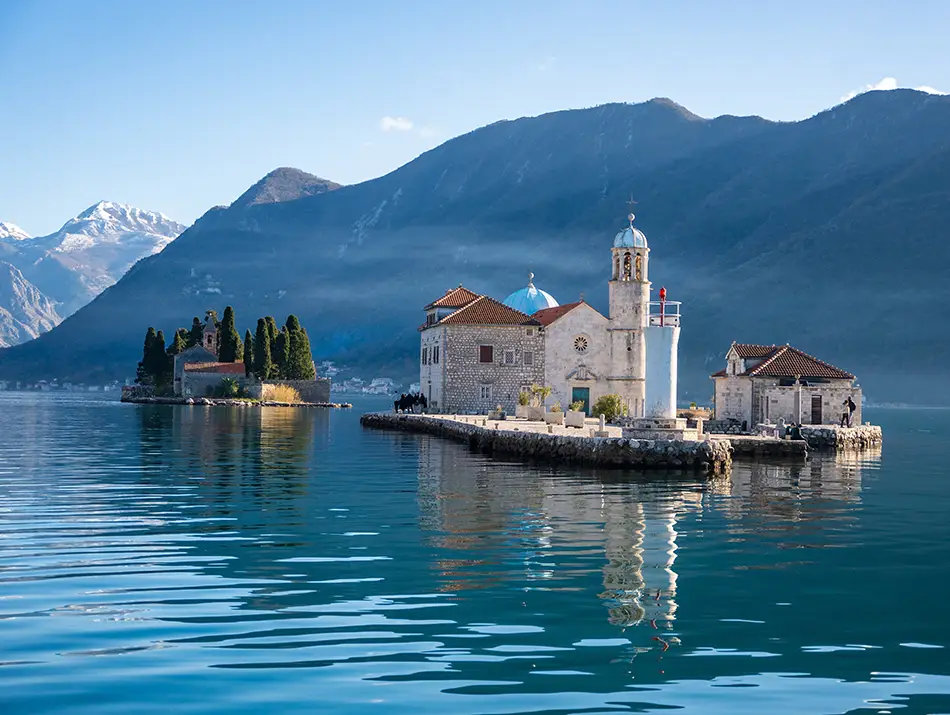
The Scene: A pocket-sized Balkan country where cliffs dive straight into the Adriatic.
Famous For: The Bay of Kotor, Venetian walled towns, and roads that twist into clouds.
Local Quirk: Locals greet each other with three alternating cheek kisses.
Unusual Bite: Njeguški pršut — mountain-cured ham smoked over beechwood.
Montenegro packs whole landscapes into a morning’s drive. In one hour, you can leave a pebble beach for an alpine meadow. Ancient fortresses rise above fjord-like bays, and Orthodox monasteries cling to rock faces that look impossible to climb. Despite the compact size, it feels vast once you start winding through its canyons.
Travelers come for the views and stay for the ease. The coast hums with summer yachts while inland villages still trade honey by the jar. Hiking, kayaking, or just watching the light shift over Kotor Bay — Montenegro rewards slow travel with constant variety.
Cuba – Rhythm, Ruin, and Resilience

The Scene: Classic cars roll past crumbling mansions under a heat that never hurries.
Famous For: Music, cigars, revolution murals, and the time-capsule streets of Havana.
Local Quirk: Internet access cards are sold like ration tickets — and shared freely.
Unusual Bite: Moros y Cristianos — rice and black beans named after historical rivals.
Cuba feels suspended between decades. Faded paint, perfect smiles, and music spilling from doorways form its heartbeat. The island’s contradictions — scarcity and creativity, pride and patience — make it one of the Caribbean’s most complex places to read.
Visitors wander through pastel Havana, dive in Bay of Pigs reefs, or follow Hemingway’s ghost to seaside bars. It’s rarely convenient and never predictable, yet every encounter tells a story. To see Cuba properly, plan less and listen more.
Saint Vincent and the Grenadines – The Caribbean You Still Have to Sail

The Scene: Thirty-two islands, most uninhabited, scattered like emeralds in turquoise water.
Famous For: Sailing routes, volcanic peaks, and the filming of Pirates of the Caribbean.
Local Quirk: Breadfruit festivals celebrate the crop once brought by Captain Bligh.
Unusual Bite: Roasted breadfruit with jackfish — the national dish, smoky and rich.
Saint Vincent rises steep and green from the sea, while its smaller Grenadines stretch away like punctuation marks of calm. Black-sand beaches meet coral shallows. Fishing boats double as taxis between islands. The air smells of salt and nutmeg, and every sunset feels like a community event.
Travelers sail here for simplicity — quiet bays, slow meals, and the kind of hospitality that comes without an agenda. It’s not built for speed or spectacle, just steady beauty and warm trade winds that never stop blowing.
Italy – Layers of History, Plates of Flavor

The Scene: A patchwork of cities, dialects, and rival kitchens — every region sure it’s the real Italy.
Famous For: Art, pasta, style, and the invention of dolce far niente — the sweetness of doing nothing.
Local Quirk: Cappuccino is a breakfast drink only. Order it after lunch and you’ll be politely judged.
Unusual Bite: Lampredotto — Florence’s street sandwich made from cow stomach.
Italy reads like a layered story — Roman stones, Renaissance genius, and modern scooters weaving between them. Each city feels self-contained: Venice built on water, Naples on fire, Florence on perfectionism. The rhythm is chaotic yet elegant, held together by espresso and opinion.
Visitors trace ruins, taste regional recipes, and find that the best meals often happen in family kitchens. North to south, trains cross landscapes that could fill an art gallery. It’s familiar yet still surprising — a country that keeps proving clichés right.
Seychelles – Nature’s Private Gallery

🏆 Dream Travel Destination for 2026
The Scene: One hundred fifteen islands scattered across the Indian Ocean like brushstrokes.
Famous For: White beaches, granite boulders, and sea turtles older than the tourists.
Local Quirk: The national music, moutya, was once banned for being too sensual.
Unusual Bite: Fruit bat curry — a Creole specialty rich in spice and debate.
Seychelles is the definition of remote luxury. Dense jungle meets coral shallows, and every beach looks photoshopped even before sunrise. Several islands are entire nature reserves with more birds than people.
For travelers, it’s about slowing down to island time — snorkeling with giant tortoises, tasting coconut curries, or hiking trails scented with cinnamon. Prices lean very high, but so does the standard of calm, making Seychelles one of the best countries to visit for luxury island life.
Monaco – The World’s Densest Luxury

The Scene: A sovereign city smaller than New York’s Central Park but packed with yachts.
Famous For: Formula 1, casinos, royal weddings, and Mediterranean glamor.
Local Quirk: Citizens can’t gamble in Monte Carlo’s casino — it’s for visitors only.
Unusual Bite: Barbagiuan — fried pastries filled with Swiss chard and ricotta.
Monaco sits between France and the sea, glittering like a mirage of excess. High-rises cling to cliffs, Ferraris idle outside bakeries, and security cameras outnumber street cats. Yet behind the spectacle lies a functioning small country — polished, disciplined, and shockingly clean.
Visitors come to watch fast cars or slow sunsets. The harbor fills with billionaires, but nearby steps reveal quiet lanes and cliff gardens. It’s expensive, yes, but fascinating — proof that one square mile can project global style.
Guinea-Bissau – Remote, Real, and Remarkably Unvisited

The Scene: A coastal maze of mangroves and low islands, still ruled more by tides and tradition than traffic.
Famous For: The Bijagós Archipelago, salt flats, and vibrant carnival celebrations.
Local Quirk: Some communities still choose their leaders through sacred masked dances.
Unusual Bite: Caldo de mancarra — groundnut soup thickened with local vegetables.
Guinea-Bissau rarely makes headlines, which is part of its charm. Fishing villages line muddy estuaries, and faded colonial buildings lean gently toward the sea breeze. Daily life unfolds quietly, shaped by tides and traditions that outsiders rarely see.
Travel here is for those who prefer raw discovery: wooden boats crossing to untouched islands, birdlife filling mangroves, and cultural rituals that run deep. Infrastructure is light, but hospitality runs steady — the country feels unhurried, real, and waiting to be understood.
Belize – Where the Jungle Meets the Barrier Reef
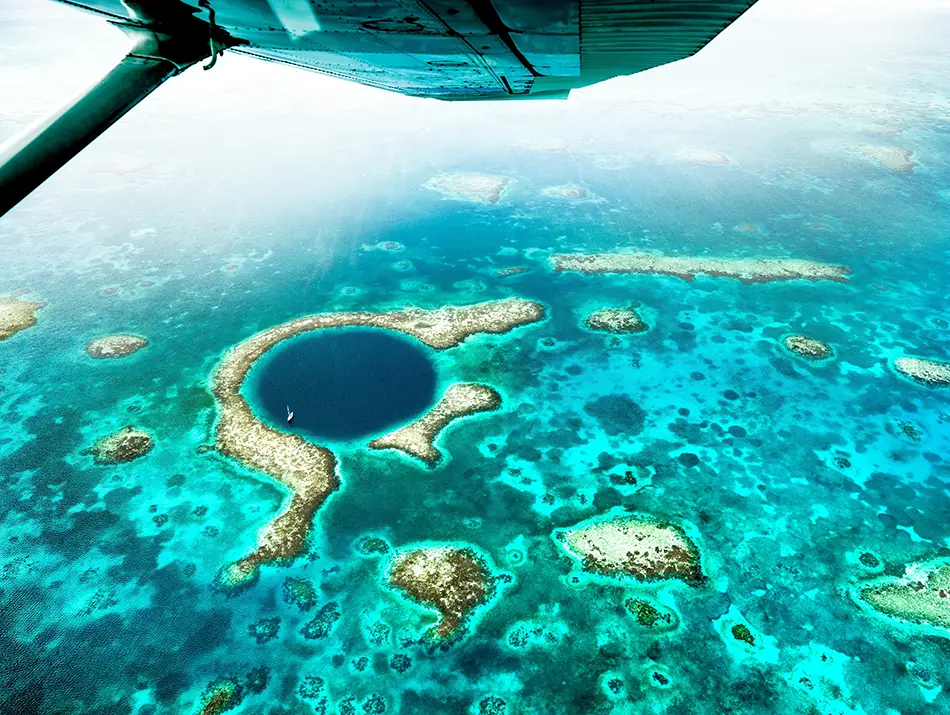
🏆 Sustainable Tourism Destinations for 2026
The Scene: A slice of Central America where English is official and reggae echoes through Maya ruins.
Famous For: The Blue Hole dive site, coral reefs, and jungle lodges near ancient temples.
Local Quirk: Locals use “right now” to mean soon, later, or eventually.
Unusual Bite: Gibnut stew — made from a forest rodent once served to Queen Elizabeth II.
Belize bridges Caribbean rhythm and Central American wilderness. The coast hums with laid-back villages and diving boats, while inland caves hide Maya carvings and echoing waterfalls. It’s the kind of place where everyone knows a shortcut, but no one hurries to take it.
Travelers mix reef and rainforest in a single day — snorkeling with rays at dawn, climbing pyramids by dusk. Prices run higher than neighbors, but access is effortless: English signs, friendly chaos, and rum punch under palm roofs.
Micronesia – Islands Scattered Like Stars
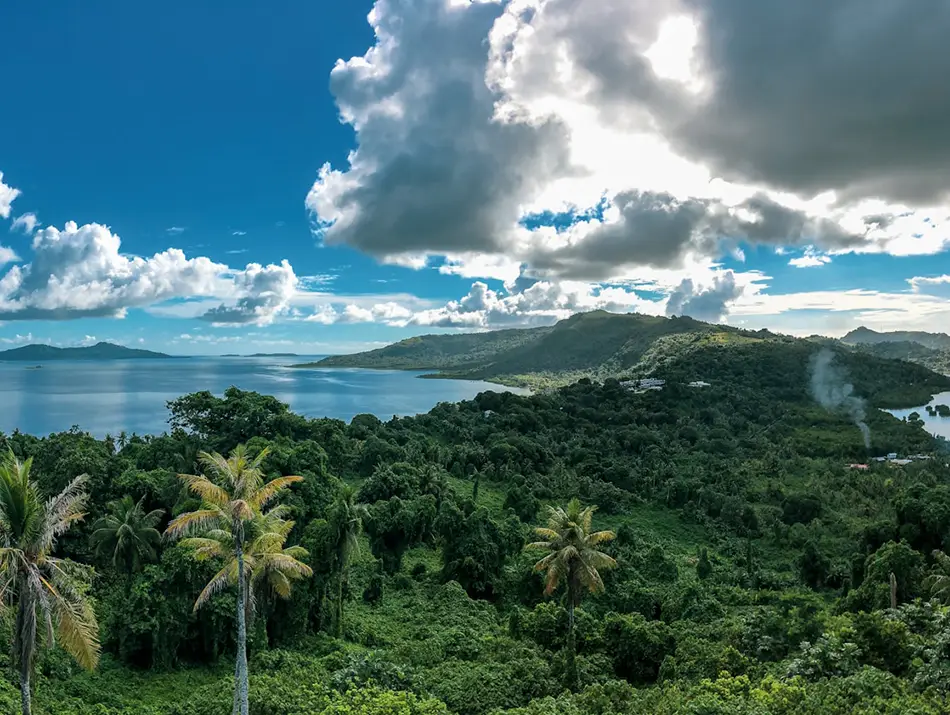
The Scene: Small green islands sit in wide blue lagoons, linked by coral reefs instead of highways.
Famous For: World-class diving, traditional navigation, quiet outer islands, and remote Pacific culture.
Local Quirk: Gift-giving is serious. Refusing a small shell or fruit can offend.
Unusual Bite: Breadfruit cooked in coconut cream — a daily staple in village meals.
Micronesia is a nation spread thin across the Pacific. Each state has its own identity: Yap maintains stone money traditions; Chuuk holds one of the world’s largest WWII shipwreck diving sites; Pohnpei shelters ancient stone ruins at Nan Madol; and Kosrae remains heavily forested with few visitors. Village life is organized around clans, chiefs, and ocean knowledge rather than towns and roads.
Travel is slow and requires planning. Flights are limited and islands are reached by boat, but the experience is direct: reef dives over coral walls, paddling traditional canoes, and evenings spent with families under breadfruit trees.
Cameroon – Africa in Miniature
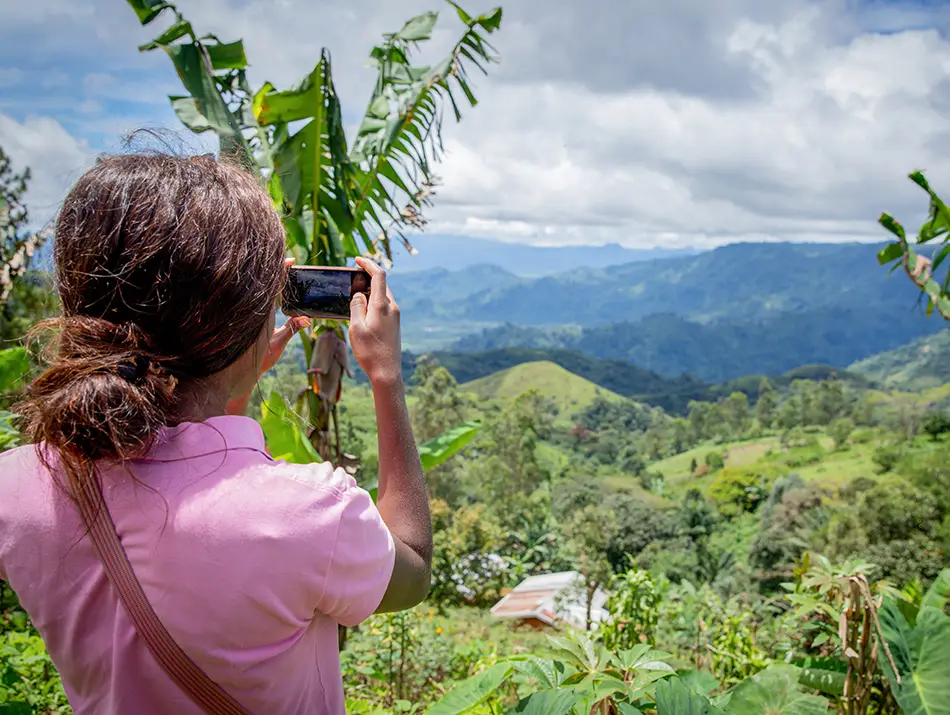
The Scene: Deserts in the north, rainforests in the south, and Mount Cameroon watching over all.
Famous For: Musical diversity, wildlife parks, and pepper-rich cuisine.
Local Quirk: Handshakes last long — breaking them early is considered rude.
Unusual Bite: Ndolé — a bitter-leaf stew with peanuts and shrimp.
Cameroon packs an entire continent’s variety inside one border. French and English overlap with dozens of local tongues, and landscapes shift faster than radio stations. It’s a crossroads of rhythms, flavors, and climates that somehow fit together.
Travelers can climb volcanic peaks, meet silverback gorillas, or watch traditional wrestling in dusty arenas. Roads are rough but rewarding, and food is a highlight everywhere — smoky, spicy, full of life.
France – Where Taste Became a Lifestyle

The Scene: A country that turns daily life into a performance of taste and style.
Famous For: Wine, museums, pastries, and endless debates about what’s truly French.
Local Quirk: Lunch breaks can still last two hours, even in Paris.
Unusual Bite: Andouillette — sausage made from tripe, adored and feared in equal measure.
France is a country obsessed with perfection — in bread crusts, in grammar, in lighting a monument at dusk. Paris headlines the story, but the details hide elsewhere: lavender fields buzzing with bees, Atlantic fishing towns, mountain villages that smell of cheese and chimney smoke.
Travelers drift between vineyards, cathedrals, and markets where tasting counts as learning. Life works best at full attention — even coffee has its moment. Even the smallest café can feel theatrical — a stage for conversation, espresso, and a view that somehow feels designed.
Tajikistan – Peaks Above the Clouds

🏆 Top Mountain Destinations for 2026
The Scene: More than ninety percent of the land rises into mountains, crossed by the Pamir Highway.
Famous For: High-altitude lakes, Silk Road ruins, and hospitality that starts with tea.
Local Quirk: Guests are always offered bread first — refusing is unthinkable.
Unusual Bite: Kurut — salty dried yogurt balls carried by shepherds.
Tajikistan is defined by height and endurance. Villages cling to narrow valleys, eagles trace circles over turquoise lakes, and Soviet relics rust beside caravan routes once used by Marco Polo. The scenery is enormous, but life stays small-scale and human. It is arguably the best country to visit for mountain adventures, where landscapes shape the rhythm of every day.
Those who travel the Pamir Highway find solitude on a scale hard to imagine. Homestays replace hotels, tea replaces hurry, and every turn climbs higher into thin, bright air.
Bosnia and Herzegovina – The Rebuilt Heart of the Balkans

The Scene: Ottoman minarets, Austro-Hungarian facades, and mountain rivers carving deep valleys.
Famous For: Sarajevo’s old town, the Neretva River, and the slow rhythm of coffee and conversation.
Local Quirk: Locals linger for hours over one espresso.
Unusual Bite: Ćevapi — small grilled sausages served with flatbread and onions.
Bosnia and Herzegovina doesn’t hide its past. The scars of the 1990s war still mark buildings in Sarajevo and Mostar, yet so do signs of renewal — cafés, markets, and restored bridges linking people and places once divided.
Travelers find beauty in contrast: Ottoman streets beside Austro-Hungarian facades, turquoise rivers running under rebuilt arches, and a culture that feels both European and Middle Eastern. It’s affordable, welcoming, and grounded in quiet resilience.
Argentina – Tango Rhythm at the Edge of the World
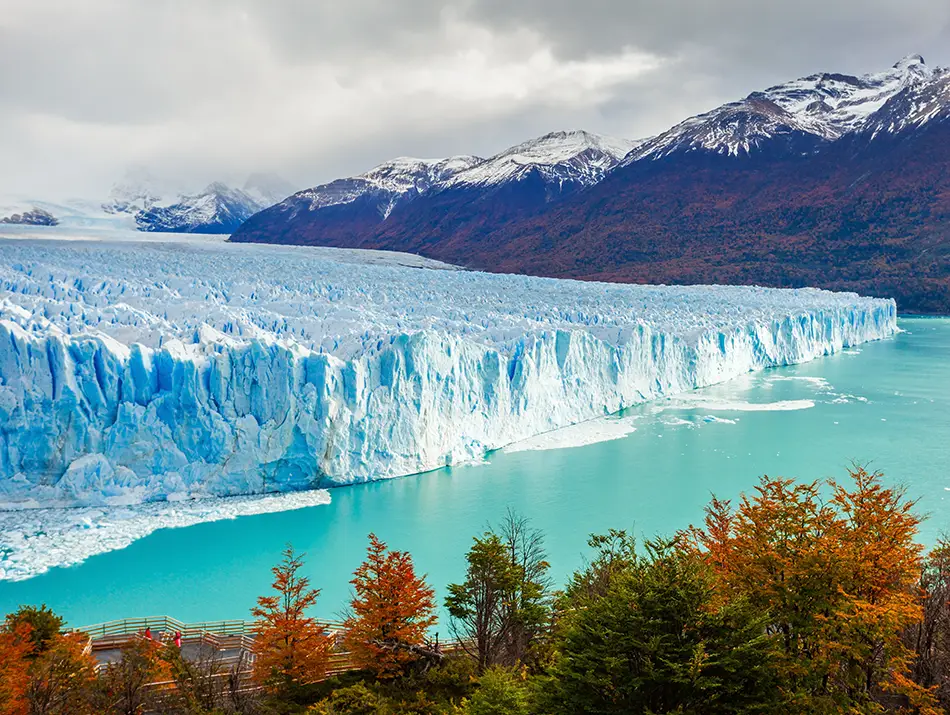
The Scene: From icy Patagonia to tropical Misiones, geography feels infinite.
Famous For: Tango, smoky steakhouses, red wine, and stadiums that shake with song.
Local Quirk: Clapping hands at the door replaces knocking.
Unusual Bite: Morcilla — blood sausage grilled on open parrillas.
Argentina covers everything from glaciers to jungle, with a capital that mixes European architecture and Latin energy. Buenos Aires draws travelers for tango halls, cafés, and endless nightlife, while Mendoza’s vineyards, Iguazú’s waterfalls, and the southern ice fields show the country’s extremes.
Prices swing with the economy, but travel here stays rewarding — generous portions, open people, and landscapes built for long journeys.
Trinidad and Tobago – One Nation, Two Tempos
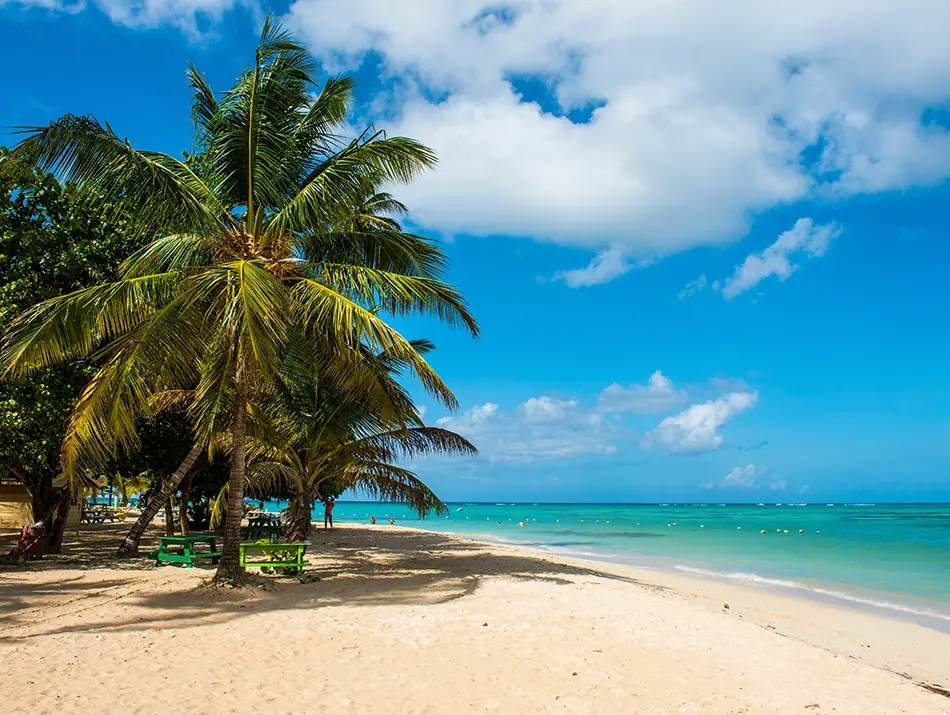
The Scene: Twin islands just off Venezuela, one loud with carnival, the other quiet with coral.
Famous For: Steelpan music, soca, and beaches lined with coconut palms.
Local Quirk: On Sundays, locals “lime” — hang out, talk, and let the day drift.
Unusual Bite: Shark and bake — fried shark in warm bread, best eaten on Maracas Beach.
Trinidad bursts with rhythm: traffic horns, drum rehearsals, and laughter that rolls through open windows. Tobago, smaller and slower, trades calypso for waves and reef dives. Together they balance motion and calm, energy and ease.
For travelers, it’s an easy country to navigate — English-speaking, diverse, and full of flavor. Visit during Carnival for chaos in color, or stay after for quiet forest trails and sea turtles nesting at night.
Poland – Amber Coast, Castle Squares, Mountain Trails
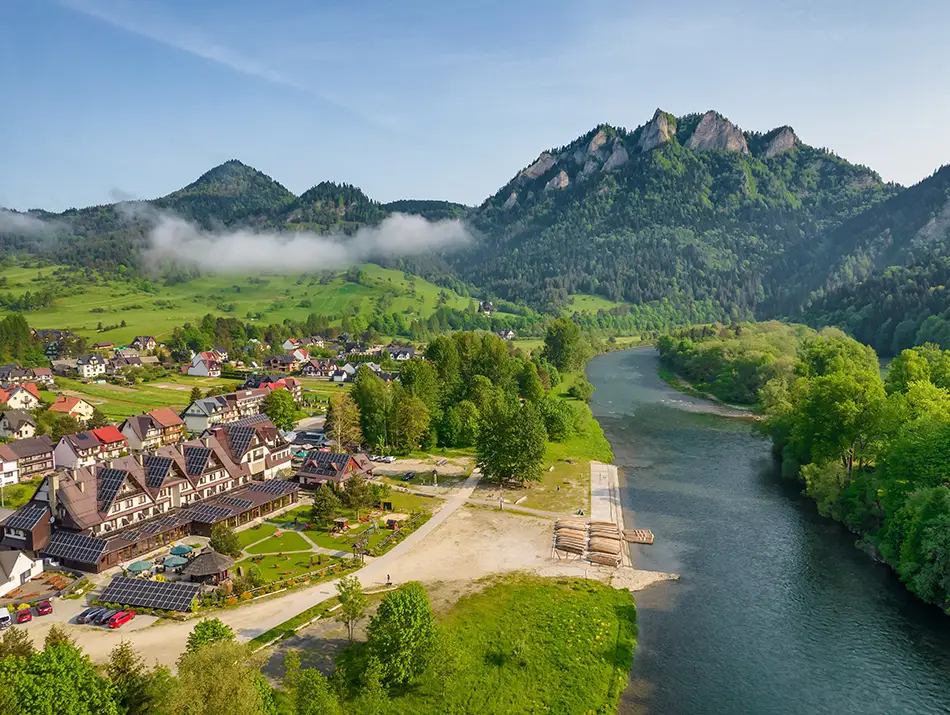
The Scene: Gothic cities rebuilt from ashes and a countryside of lakes, birch forests, and quiet farm roads.
Famous For: Gdańsk’s amber coast, Wrocław’s bridge-filled river islands, and the mountain paths of Zakopane leading to glacial lakes.
Local Quirk: Poles rarely split bills. One person pays, the other covers next time.
Unusual Bite: Czernina — duck-blood soup once served to rejected suitors.
Poland mixes old structure with new purpose. Warsaw’s postwar blocks now hold rooftop bars; Łódź turned textile mills into art studios; and Gdańsk’s shipyards, once home to Solidarity protests, house cafés and design shops. Southward, wooden inns in Zakopane serve mountain cheese to hikers and skiers passing through.
Trains run reliably between cities, and local buses reach nearly every village. Travel stays affordable, with small hotels, milk bars, and regional guesthouses welcoming visitors year-round. Poland isn’t dramatic at first glance — its appeal builds through small discoveries that feel genuine and lived-in.
Belgium – World Capital of Beer and Chocolate

The Scene: Canals, cathedrals, and comic books all share equal respect here.
Famous For: Beer, chocolate, surreal art, and EU diplomacy.
Local Quirk: Locals debate fries the way others debate politics — mayonnaise is non-negotiable.
Unusual Bite: Stoemp — mashed potatoes mixed with vegetables and sausage.
Belgium balances contradiction with charm. Medieval towns glow under gray skies while modern trains glide between them. The country feels half medieval, half bureaucratic, and somehow it works — efficient without losing character.
For travelers, the reward is in detail: cafe windows fogged from waffle steam, tiny breweries perfecting a single ale, and street murals that make comic art look noble. Nothing shouts here, yet everything tastes better than it should.
Yemen – Home of the World’s Oldest Skyscrapers
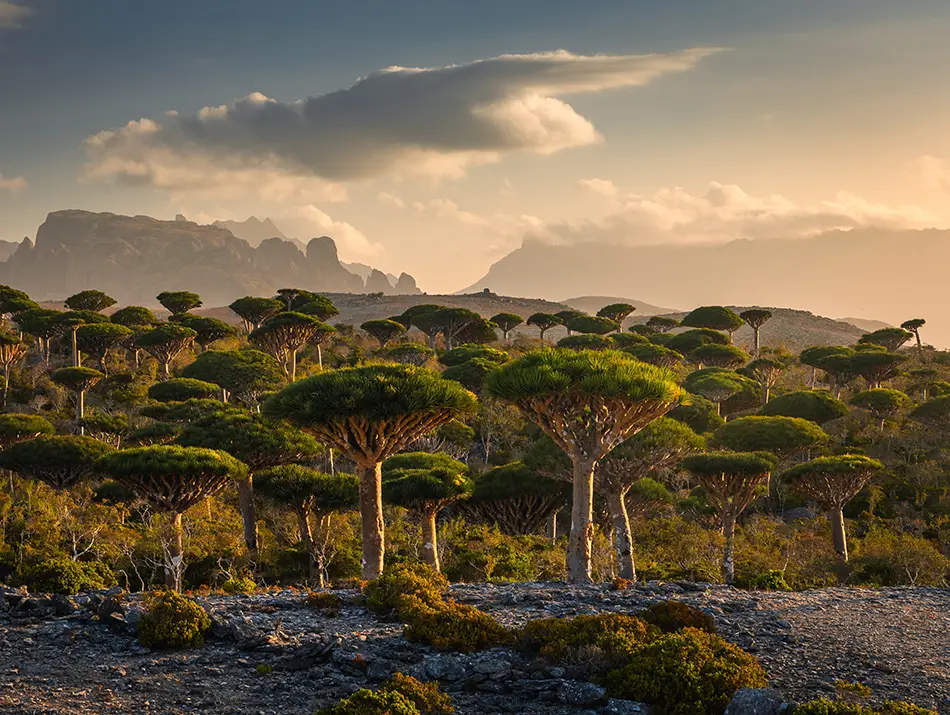
The Scene: Ancient cities of mud-brick towers rising from desert plains.
Famous For: Frankincense routes, mountain terraces, and coffee’s birthplace.
Local Quirk: Hospitality starts with serving qishr — coffee husk tea spiced with ginger.
Unusual Bite: Saltah — bubbling stew topped with whipped fenugreek foam.
Sana’a’s skyline of brown-and-white houses looks painted by time itself, and mountain villages still build with stone the way ancestors did. In Shibam, 500-year-old mudbrick towers rise up to 130 feet (about 40 meters), earning the city its title as the world’s first “skyscraper” town. The scent of cardamom and dust defines its rhythm.
Mainland Yemen is not open to independent tourism due to conflict, checkpoints, and security restrictions. Socotra Island, however, is more accessible through pre-arranged tours that fly from Abu Dhabi directly to the island without passing through the mainland. Visitors sleep in simple camps or small guesthouses, travel by 4×4, and explore limestone plateaus, dragon blood tree forests, and quiet beaches.
Malawi – Africa’s Inland Beach Destination
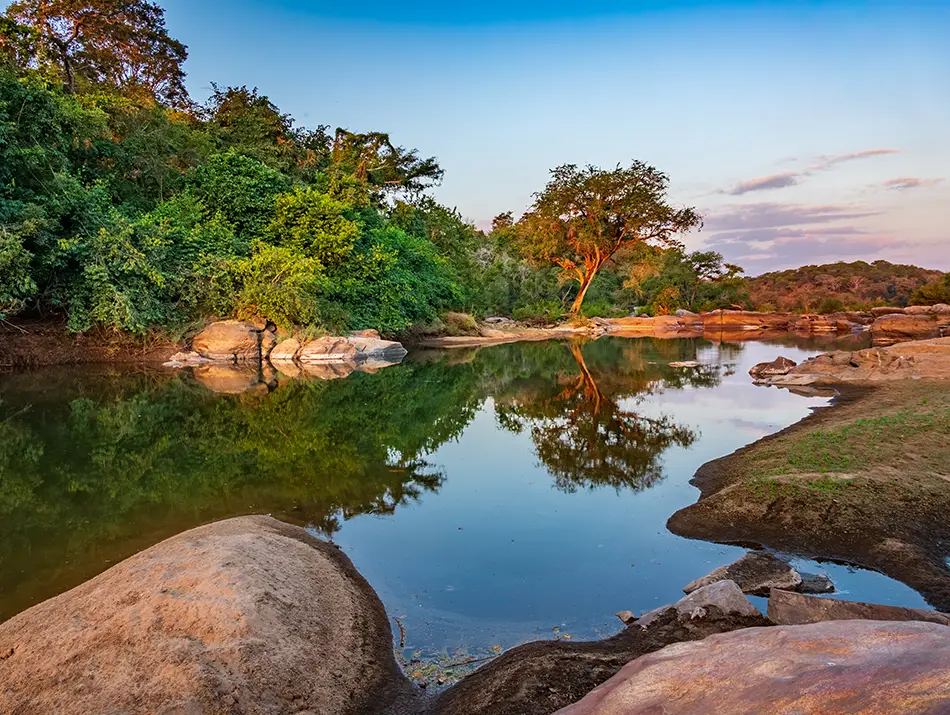
The Scene: Landlocked but never dry — one fifth of it is Lake Malawi’s clear water.
Famous For: Friendly markets, mountain hikes, and fish that sparkle like glass.
Local Quirk: Handshakes are followed by a gentle clap — a sign of respect.
Unusual Bite: Nsima — maize porridge eaten with beans or dried fish.
Malawi moves gently. Roads curve through green hills, and the lake stretches wider than the horizon. Life gathers along its shores: fishermen mending nets, children paddling dugout canoes, traders balancing baskets on bicycles.
For travelers, it’s an easy place to feel close to people. Lodges sit quietly by the water and wildlife parks remain affordable.
Liberia – Where Africa Meets Its American Past

The Scene: A country of palm-lined beaches, rainforest hills, and wooden houses built by freed settlers.
Famous For: Surf beaches, rubber plantations, and a national flag that mirrors the U.S.
Local Quirk: The handshake often ends with a friendly finger snap.
Unusual Bite: Palm butter soup — spicy stew made from pounded palm fruit and fish.
Liberia’s story is one of return and reinvention. Founded in the 1800s by freed African Americans, it still shows traces of their influence — wooden porches and colonial-style houses line parts of Monrovia, and church choirs sing hymns that echo across tropical streets. The capital hums with music and motorbikes, while inland villages move to slower rhythms surrounded by rainforest and red earth.
Travel is still off the beaten track — beaches stretch empty for miles, and surf breaks are world-class yet almost unknown. It’s a country rediscovering itself, open to visitors who come with patience and curiosity rather than checklists.
Denmark – Designed to Feel Effortless

The Scene: Flat landscapes, wind turbines, and bicycles outnumbering cars.
Famous For: Design minimalism, fairy tales, and one of the world’s happiest populations.
Local Quirk: Danes burn candles year-round — even in summer daylight.
Unusual Bite: Smørrebrød — open-faced rye sandwiches layered with precision.
Denmark runs on quiet confidence. Streets feel orderly without stiffness. Cafés glow with soft light even on gray mornings. Everything from furniture to pastries seems considered, as if design were a shared language. It’s one of the best countries to visit if you appreciate calm aesthetics, good taste, and a gentle pace.
The joy is in detail — biking along canals, tasting new Nordic cuisine, or wandering castles that feel more livable than regal. Prices are high but so is the sense of ease: a country built for comfort, not display.
Djibouti – Heat, Salt, and Shifting Light
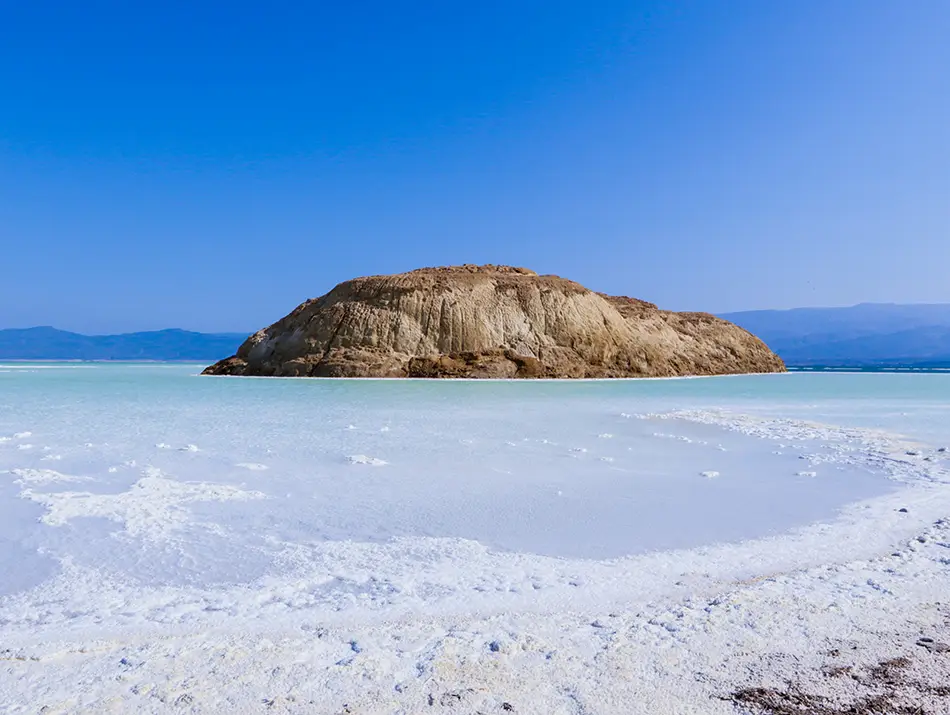
The Scene: A volcanic patch between the Red Sea and the Horn of Africa.
Famous For: Lake Assal, one of the saltiest and lowest places on Earth.
Local Quirk: Tea is poured from great height to cool it — the national pastime.
Unusual Bite: Fah-fah — slow-cooked goat stew served with flatbread.
Djibouti packs volcanoes, salt flats, and coral shores into a country you can cross in half a day. Camels cross salt flats that shimmer like mirrors, while the capital hums with traders from three continents. It’s small but strategically placed.
Travel here feels raw and vivid — swimming beside whale sharks, watching sunrise over sulfur lakes, and drinking spiced tea as the heat blurs the horizon. It’s challenging travel, but every scene looks etched by light and salt.
Belarus – The Country That Stayed Industrial
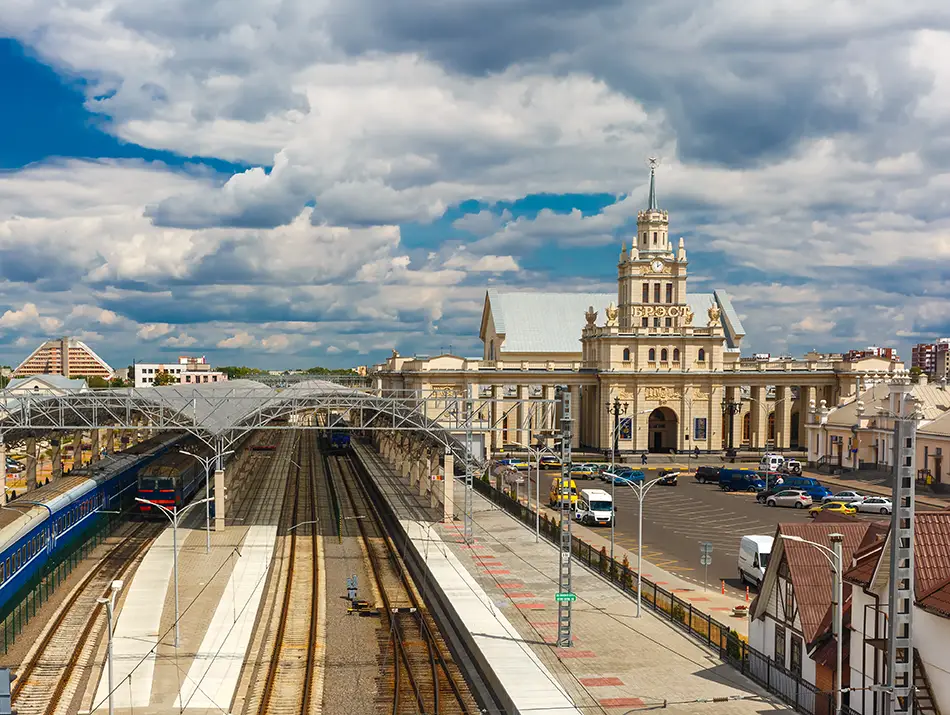
The Scene: Forests, lakes, and post-Soviet cities defined by symmetry.
Famous For: Folk festivals, fortresses, and resilience under long winters.
Local Quirk: Toasts are serious business — you drink only after a speech.
Unusual Bite: Draniki — crisp potato pancakes fried in sunflower oil.
Belarus remains one of Europe’s least-explored corners. Minsk’s wide avenues tell stories of Soviet ambition, while villages nearby keep wooden houses painted in sky blue and mint green. Nature dominates — half the country is forest, alive with storks and quiet lakes.
Movement inside the country is straightforward, and cities are clean, orderly, and calm. In rural areas, visitors can stay in guesthouses near lakes, walk through national parks with European bison, or explore brick fortresses surrounded by fields.
United Arab Emirates – Speed, Sand, and Skylines

The Scene: A federation of desert emirates transformed into glass-and-steel cities.
Famous For: Skyscrapers, luxury malls, and islands built from imagination.
Local Quirk: Friday brunch is a weekly ritual, mixing faith and festivity.
Unusual Bite: Luqaimat — sweet dumplings drizzled with date syrup.
The UAE compresses centuries into decades. Bedouin traditions coexist with supercars, and desert dunes border the world’s tallest building. Each emirate plays a different role — Dubai performs, Abu Dhabi manages, Sharjah preserves.
For travelers, it’s comfort made visible: spotless metros, air-conditioned museums, and cultural contrasts you can cross in a day. Beyond the gloss, oases and mosques keep the old rhythm alive.
Mexico – Cities, Pyramids, and Street Food Smoke
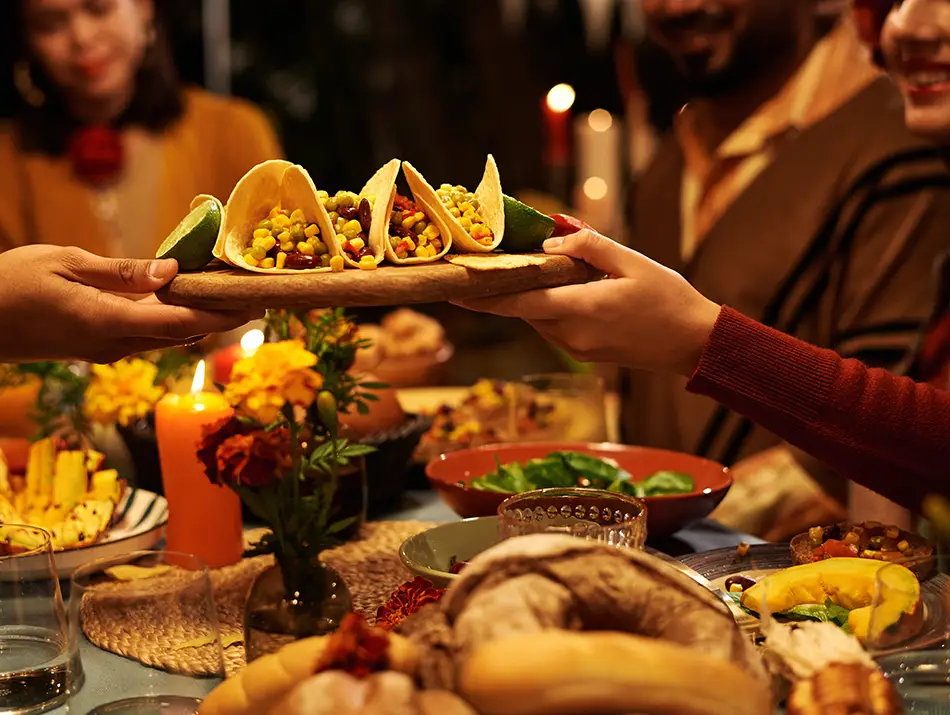
🏆#1 of the Best Countries to Visit for a Gastronomic Experience in 2026
The Scene: From ancient Maya cities to silver-mining towns and agave landscapes, Mexico is the absolute UNESCO champion of the region.
Famous For: Pre-Hispanic ruins, regional cuisines, folk traditions, and coast-to-mountain diversity.
Local Quirk: Lime goes on almost everything — even fruit, chips, and soup.
Unusual Bite: Escamoles — ant larvae sautéed in butter and herbs, called Mexican caviar.
Ancient centers like Teotihuacan and Monte Alban stand near Spanish colonial plazas and modern neighborhoods. Food ties it together: corn tortillas, chiles, herbs, and slow-cooked stews form a shared base, expressed differently in every state.
Travel is about eating and moving through regions. Street stalls serve tacos al pastor in Mexico City. Oaxaca focuses on moles made from chiles and seeds. Coastal regions grill fresh fish and marinate ceviches. Yucatán plates dishes flavored with sour orange. Mexico is easily one of the best countries for foodies, with every region offering its own identity on the plate. Prices range widely, buses and domestic flights connect well, and safety varies by area.
Togo – Where Every Hour the Landscape Changes

The Scene: A slim stretch of West Africa running from beach to savanna in under four hours.
Famous For: Voodoo festivals, palm-fringed coastlines, and mountain villages.
Local Quirk: Market vendors still trade with small cowrie shells for good luck.
Unusual Bite: Fufu with groundnut sauce — soft yam dough served with peanut stew.
Togo feels like a thread tying cultures together — French colonial echoes, tribal kingdoms, and coastal calm. Lomé, the capital on the Gulf of Guinea, is alive with markets and music, while inland roads climb toward coffee farms and sacred forests.
Roads link the coast to the mountains in a single day, motorcycle taxis cover short trips, and guesthouses welcome travelers with simple comfort. Markets are friendly to foreigners, food is cheap and filling. Small in size, Togo offers quick access to beaches, waterfalls, and forest trails without crowds or rush.
Syria – The World’s Longest-Inhabited Cities Alive
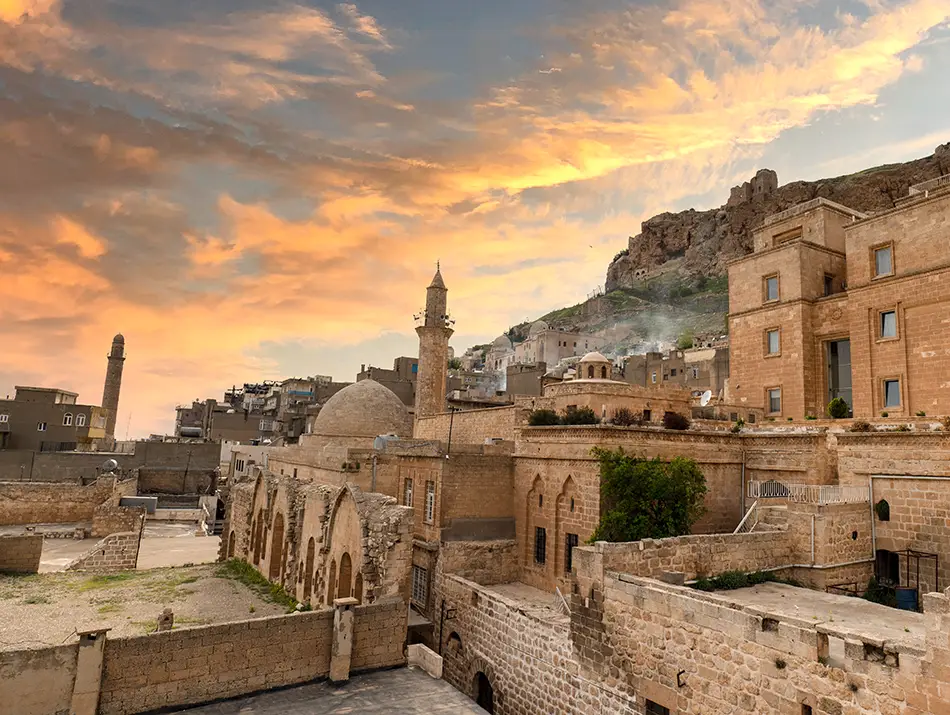
The Scene: A land of Mediterranean hills, fertile valleys, and desert plains.
Famous For: Damascus, the world’s longest-inhabited capital, and Aleppo, once a Silk Road hub known for its stone houses.
Local Quirk: Coffee is poured thick and strong, with fortunes read from the grounds.
Unusual Bite: Kibbeh nayyeh — raw minced lamb mixed with bulgur and spice.
Syria reveals its beauty quietly, in what has survived. Stone citadels, desert ruins, and faded mosaics tell of empires that rose, traded, and fell. Even in hardship, hospitality remains sacred — tea is poured for guests before questions are asked.
Travel today is limited and often unsafe, but its legacy stays unmatched. Scholars, pilgrims, and cooks alike trace roots here, where the world’s first recipes and alphabets began.
Eritrea – The Red Sea’s Quiet Corner

The Scene: A slim country of mountains and coastlines still free from mass tourism.
Famous For: Asmara’s Art Deco streets and Italian-era cafés frozen in time.
Local Quirk: Morning begins with a slow coffee ceremony shared among neighbors.
Unusual Bite: Zigni — spicy beef stew served with spongy injera bread.
Asmara, the capital, keeps its Italian-era cinemas, cafés, and pastel buildings almost unchanged. Massawa, the main Red Sea port, is built from coral stone and known for its heat and Ottoman-era architecture.
Travelers come for clear seas and quiet streets. The route between Asmara’s cool plateau and the coast drops more than 7,500 feet (about 2,300 meters), passing mountain villages, desert plains, and views that reach the sea.
Lesotho – The Kingdom in the Sky
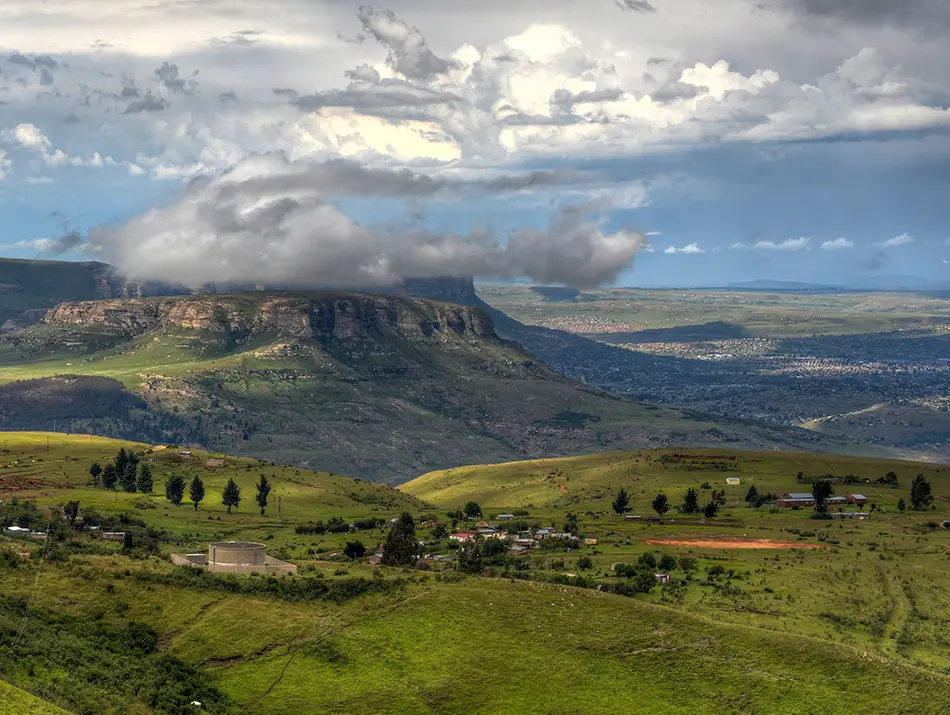
The Scene: A small, high-altitude country of plateaus and cliffs where most towns sit above 3,280 feet (1,000 meters).
Famous For: Mountain scenery, Basotho pony riding, blanket traditions, and remote village life.
Local Quirk: Cone-shaped Basotho hats mirror the country’s volcanic peaks.
Unusual Bite: Papa — maize porridge eaten with spinach and spicy meat.
Lesotho’s entire landscape sits in the highlands, which shapes everything from farming to clothing. Fields grow hardy grains instead of tropical crops, and Basotho ponies remain practical transport between villages where roads run thin. Round stone houses cluster along ridgelines, and the Basotho hat — a woven cone — stands as a national symbol seen on buildings, textiles, and signposts.
Travel focuses on outdoor movement. Visitors hike ridge trails and visit waterfalls and dams set deep in valleys. Roads are improving, but distances feel longer due to mountain curves. Guesthouses and lodges are simple and welcoming, and conversations often start with shared tea. Lesotho offers access to daily rural life — not staged — shaped by altitude, community, and steady routine.
Jamaica – Island of Bass and Breeze

The Scene: Green mountains tumble into turquoise water and rum-sweet air.
Famous For: Reggae music, jerk-seasoned barbecue, and beaches backed by nonstop rhythm.
Local Quirk: “Soon come” can mean any time — patience is part of the rhythm.
Unusual Bite: Ackee and saltfish — creamy fruit cooked with salted cod, the national dish.
Music plays from shops and buses, and the hills above Kingston grow the island’s famous Blue Mountain coffee. Smoke from jerk grills mixes with sea air along the coast. Jamaica is one of the best countries to visit if you look for rhythm, flavor, and scenery woven together.
You can hike mountain trails, join street dances, or step into recording studios open to outsiders. Beaches fill after sunset, rum is local everywhere, and small towns keep the music loud and the pace slow.
Angola – Atlantic Coast, Red Earth, and Rising Cities
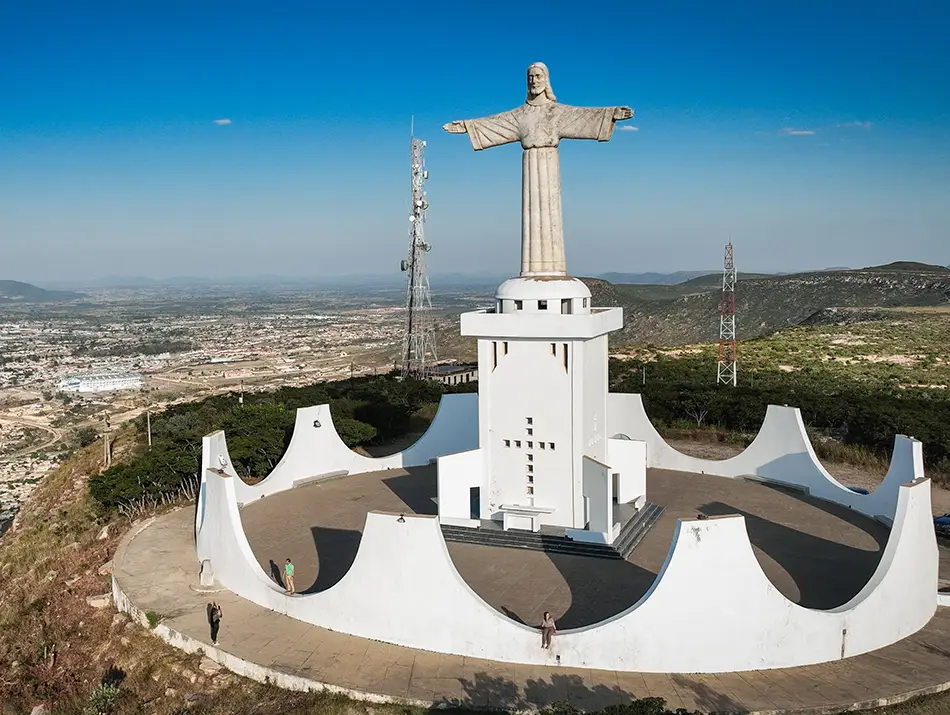
The Scene: Atlantic waves meet oil rigs and baobab trees on Africa’s west coast.
Famous For: Colonial forts, raw wilderness, and a music scene built on kuduro beats.
Local Quirk: Wedding guests dance before the ceremony even starts.
Unusual Bite: Moamba de galinha — chicken stew with palm oil and okra.
Angola stretches from busy coastlines to quiet plateaus. Luanda, the capital, rises with glass towers and heavy traffic, while inland roads reach colonial towns, waterfalls, and vast open plains. Portuguese remains the common language, and music fills city streets and roadside bars.
Travel requires preparation — long distances, permits, and patience — but rewards are real. Few visitors reach the Kalandula Falls, the dunes of Namibe, or the tropical parks in the north. Angola offers raw scenery, cultural depth, and a sense of discovery.
South Korea – Fast, Focused, and Fiercely Creative

🏆 Gen Z Travel Destination for 2026
The Scene: Neon skylines above mountains, temples, and rice fields.
Famous For: K-pop, high-tech life, skincare routines, and spicy street food.
Local Quirk: Couples often dress in matching outfits — a public declaration of love.
Unusual Bite: Beondegi — seasoned silkworm pupae sold at night markets.
South Korea thrives on motion. Trains slice through the country at bullet speed while cafes stay open until dawn. Tradition still breathes between the layers: paper lanterns, quiet tea rooms, and family-run restaurants that outlive skyscrapers.
For travelers, it’s a study in balance — mountain hikes in the morning, futuristic districts by night. The food scene never pauses, and neither does the curiosity. Everything seems built to impress, yet nothing feels out of reach.
United States – Big, Bold, and Never the Same Twice

The Scene: Fifty states, nearly every climate on Earth, and more opinions than people.
Famous For: National parks, pop culture, and the idea that everything can be “bigger.”
Local Quirk: Tipping isn’t optional — 15–20% is how service staff actually get paid.
Unusual Bite: Rocky Mountain oysters — deep-fried bull testicles, a ranch-town delicacy.
The United States defies single definitions. It’s desert silence in Arizona, subway rush in New York, fog over the Golden Gate, and barbecue smoke drifting through Texas backroads. Each region acts like its own country, shaped by migration, invention, and contradiction.
For travelers, it’s a playground of scale and contrast: road trips that last days, national parks the size of nations, and cities that feel like movie sets you already know. Expect efficiency, excess, and open highways — fifty versions of an idea still in progress.
Saint Kitts and Nevis – The Caribbean’s Small Twin Nation

The Scene: Rainforest peaks rise above calm beaches and coral reefs, all within easy reach by sea.
Famous For: Sugar plantation ruins, rainforest trails, and colonial forts.
Local Quirk: Locals call everyone by nickname — often given in childhood and used for life.
Unusual Bite: Goat water — a peppery stew cooked for hours, name and all.
Saint Kitts and Nevis form a small two-island nation shaped by volcanic terrain and a long sugar-growing past. St. Kitts holds most of the population, while Nevis is quieter, with one main peak rising from shoreline to summit. Old plantation estates remain visible across the landscape — some preserved, some overgrown — offering a clear link to the colonial era.
Visitors hike to volcanic craters, ride the historic sugar train around St. Kitts, and swim in sheltered coves. Ferries link the two islands in under an hour. Resorts exist but remain low-rise, and beaches stay relatively uncrowded compared to larger Caribbean destinations.
Libya – Roman Cities on the Sahara’s Edge
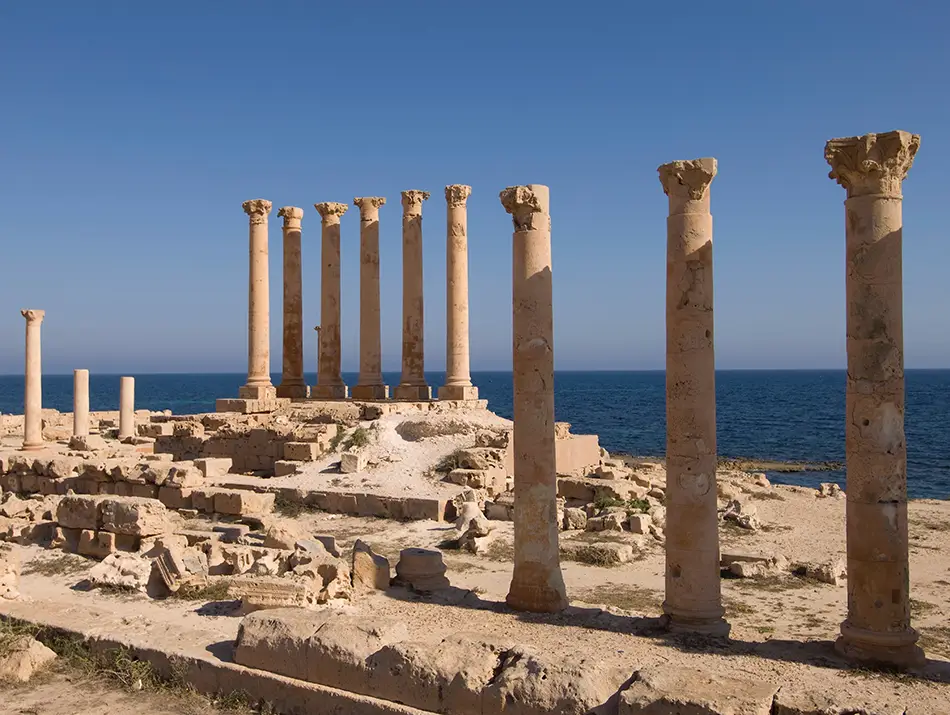
The Scene: Vast desert meets Mediterranean coast where Rome once ruled.
Famous For: Leptis Magna’s ruins, shifting dunes, and oil fields in the Sahara.
Local Quirk: Meals often start with dates and camel milk, even in the city.
Unusual Bite: Asida — semolina dough eaten with honey or spicy sauce.
Libya stretches from the Mediterranean coast to the heart of the Sahara. Roman theaters and marble streets survive in Leptis Magna and Sabratha, while inland oases support date groves and mudbrick villages surrounded by endless sand.
Travel here is possible but demanding. Permits, guides, and security checks make movement slow and expensive, and safety remains uncertain. Yet those who go find grand ruins without crowds, quiet desert nights, and a coastline that still feels untouched.
Thailand – The World’s Street Food Capital

The Scene: Golden temples rise over busy streets, with jungles and islands just beyond the city heat.
Famous For: Street food, beaches, Buddhism, and smiles that disarm strangers.
Local Quirk: Touching someone’s head — even a child’s — is considered disrespectful.
Unusual Bite: Goong ten — “dancing shrimp,” eaten alive with chili and herbs.
Thailand spans from northern mountains to southern islands, tied together by good roads, trains, and domestic flights that make travel simple. Golden temples and rice fields sit between modern cities and fishing villages. Longtail boats still move people and goods through the waterways.
Visitors find variety packed into one country — trekking near Chiang Mai, diving off Ko Tao, exploring Ayutthaya’s ruins, or taking night trains that double as moving hotels. It’s affordable, efficient, and designed for travelers who want both comfort and adventure.
Iran – The Desert Glows in Blue and Gold

The Scene: Mountains, deserts, and cities glowing with tiled domes and hospitality.
Famous For: Persian gardens, carpets, saffron, and poetry older than nations.
Local Quirk: Taarof — the art of polite insistence — means “no” might secretly mean “yes.”
Unusual Bite: Kaleh pacheh — slow-cooked sheep’s head, served at dawn.
Iran balances elegance and endurance. Mosques shimmer in blue mosaics, markets smell of rosewater and dust, and conversations flow easily once a tea pot appears. The culture prizes subtlety — gestures, metaphors, and long verses still shape how people speak.
For travelers, history sits side by side with everyday kindness. Ancient ruins rise beside modern highways. Strangers invite you to share dinner before learning your name.
Niger – Caravans, Dunes, and Desert Life

The Scene: A desert country where the vast Sahara’s dunes fade into the grassy plains of the Sahel.
Famous For: Nomadic caravans, W National Park, and Agadez’s mud-brick minaret.
Local Quirk: In Tuareg culture, men wear veils while women go unveiled.
Unusual Bite: Dambou — millet couscous mixed with greens and peanuts.
Niger spans desert and savanna, where long roads link trading towns and nomadic camps. Agadez stands as the gateway to the Sahara, known for its mud-brick mosque and Tuareg culture, while Zinder keeps traces of old caravan routes and royal palaces. Music and markets fill the air even in the smallest settlements.
Travel is challenging but memorable. Distances are huge, accommodation basic, yet the encounters stay vivid — camel markets, the Cure Salée festival, and night skies so clear they turn the desert silver.
Myanmar – Land of a Thousand Pagodas

The Scene: Pagodas gleam above rivers, misty hills hide monasteries.
Famous For: Bagan’s temples, Inle Lake’s fishermen, and betel-stained smiles.
Local Quirk: The day of the week you were born determines your spirit animal.
Unusual Bite: Tea leaf salad — fermented leaves tossed with garlic, nuts, and lime.
Yangon’s colonial streets mix with golden pagodas, while rural roads lead to villages where ox carts still set the pace. Monks walk barefoot at dawn, and the scent of incense drifts from homes and temples alike.
Travel is slow but revealing. Trains cross rice plains toward Bagan’s temples, boats thread through Inle Lake’s floating gardens, and every stop offers tea, conversation, and a glimpse of traditions still lived, not displayed.
Azerbaijan – Fire, Stone, and the Caspian Shore

The Scene: Dry hills meet the world’s largest inland sea. Flames burning from underground gas vents.
Famous For: The fire temple of Ateshgah, medieval walls of Baku’s Old City and mud volcanoes.
Local Quirk: Locals tap glasses but never cross arms when toasting.
Unusual Bite: Dushbara — tiny lamb dumplings served in broth with vinegar and garlic, eaten by the spoonful.
Baku, the capital on the Caspian coast, pairs glass skyscrapers with caravanserais from the Silk Road. Flame Towers glow above oil-era mansions, and the air carries a faint scent of gas and salt. In the Caucasus foothills, villages like Lahij still hammer copper by hand and serve tea in pear-shaped glasses.
From Soviet mosaics to Persian baths and mountain mosques, each era left something behind. Azerbaijan lives up to its nickname, the Land of Fire — not as metaphor, but as a literal landscape still burning at the edges.
Mali – Along the Great Bend of the Niger River
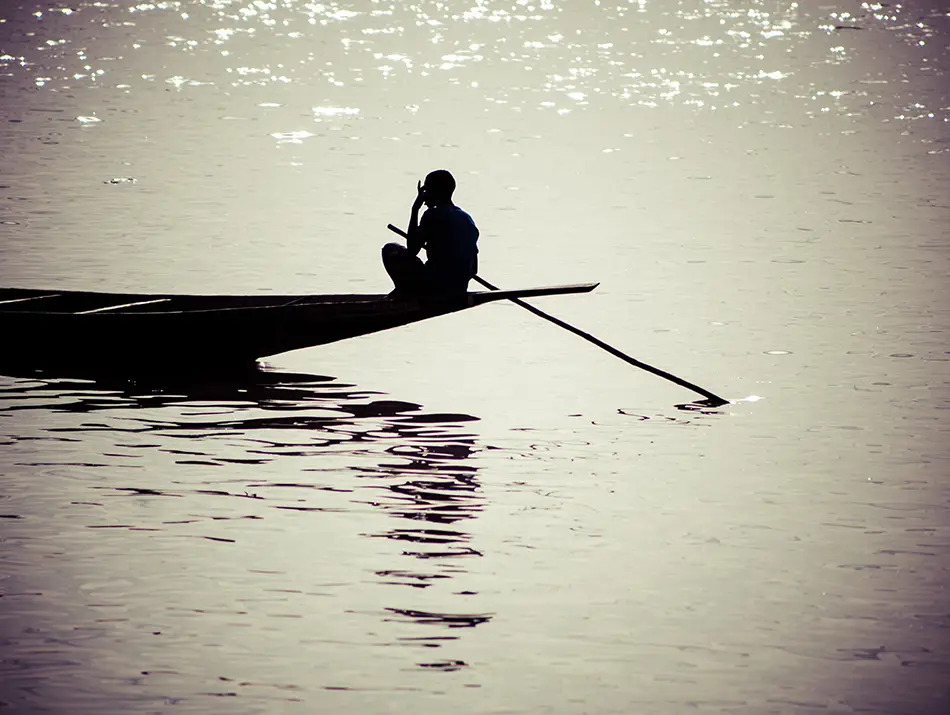
The Scene: A land where desert meets grassland, marked by mud-brick towns and river life.
Famous For: Timbuktu, desert blues music, and the Great Mosque of Djenné.
Local Quirk: Greetings can last several minutes — skipping steps is impolite.
Unusual Bite: Tiguadege na — peanut stew with meat and vegetables.
Towns along the Niger River rely on trade in salt, fish, and livestock. Griots perform traditional music that recounts Mali’s history, and mud-brick mosques dominate villages built from river clay. Markets sell millet, pottery, and silver brought from desert routes leading north.
Travel takes preparation and patience. Roads are rough and services limited, but travelers find open hospitality, lively festivals, and river life that still drives the country’s rhythm.
Finland – Where Forests Outnumber People

🏆 Digital Detox Destination for 2026
The Scene: The Scene: Forests still cover most of Finland, yet its cities run with quiet efficiency — lakes, design, and endless summer light linking both worlds.
Famous For: Saunas, design minimalism, and northern lights that turn winter skies electric.
Local Quirk: October 13 is the National Day of Failure — celebrated with good humor.
Unusual Bite: Kalakukko — rye bread baked around fish, bacon, and butter.
Finland values space the way others value sunshine. Cities run efficiently, yet step outside Helsinki and you enter a world of pine, moss, and mirrored water. Even conversation follows the same pace — calm, thoughtful, and rarely rushed. It stands out as one of the best countries for nature relaxation, where stillness is not an escape but the default.
In summer, locals head to wooden cabins where time drifts between sauna and lake. Winter swaps sunlight for northern lights, and coffee replaces sleep. It’s not cheap, but it’s seamless: trains on time, air crisp, and quiet that feels earned.
Turkmenistan – White Marble and Burning Desert

The Scene: A Central Asian state where golden domes rise over empty streets.
Famous For: The “Gates of Hell” gas crater, white-marble capital, and horse breeding.
Local Quirk: Every family in Turkmenistan celebrates Melon Day, the country’s official holiday honoring this fruit.
Unusual Bite: Dogroma — torn bread mixed with broth, onions, and meat.
Turkmenistan feels surreal — half museum, half mirage. Ashgabat gleams under desert sun, its marble buildings spotless and near silent. Outside the capital, the Karakum Desert swallows everything but wind and flame.
Visitors who make it here find contradictions everywhere: isolation paired with grandeur, tradition hidden under strict order. Few travelers arrive, but those who do never forget the sight of a crater burning in the dark.
Guatemala – Volcanoes and Living Maya
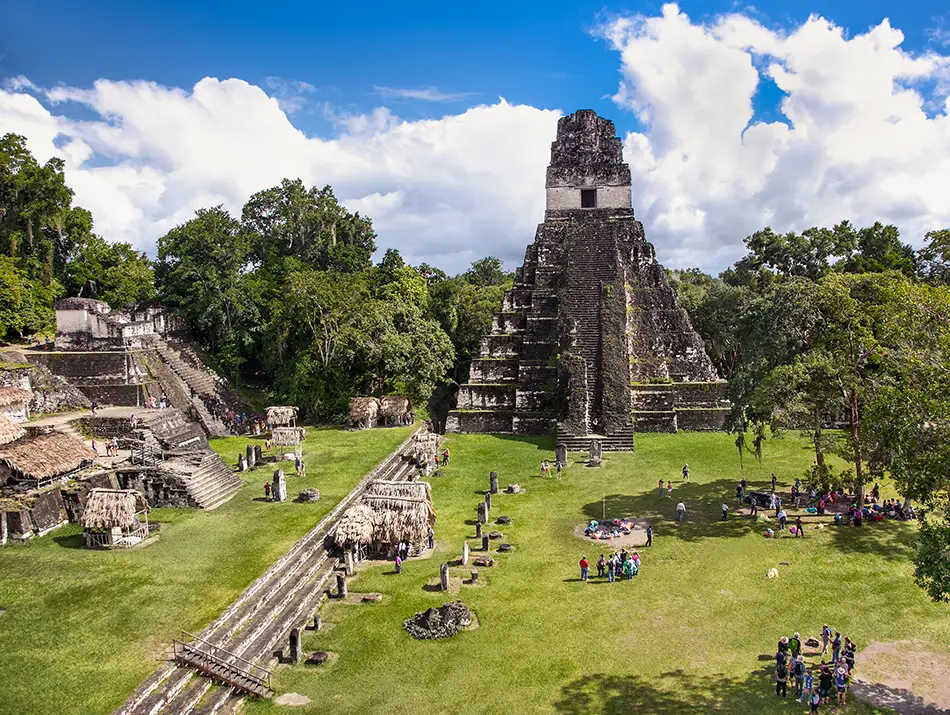
The Scene: A land of 37 volcanoes, rainbow textiles, and cities built on old empires.
Famous For: Lake Atitlán, Mayan ruins, and coffee that defines “strong.”
Local Quirk: Chicken buses — painted U.S. school buses — double as public art.
Unusual Bite: Pepián — a thick, spiced meat stew dating back to pre-colonial times.
Guatemala’s landscape tells its story. Volcanoes surround Antigua, the country’s old colonial capital known for its cobblestone streets and pastel ruins. Fertile soil feeds coffee farms across the highlands, while mountain markets overflow with textiles and local produce. Tradition stays visible — spoken in dozens of Mayan languages and woven into everyday life.
Travelers move between worlds: jungle temples at Tikal, lakeside villages, and mountain towns perfumed with roasted corn. It’s affordable, vivid, and unpredictable in the best way.
Timor-Leste – The Young Nation at the Edge of Asia
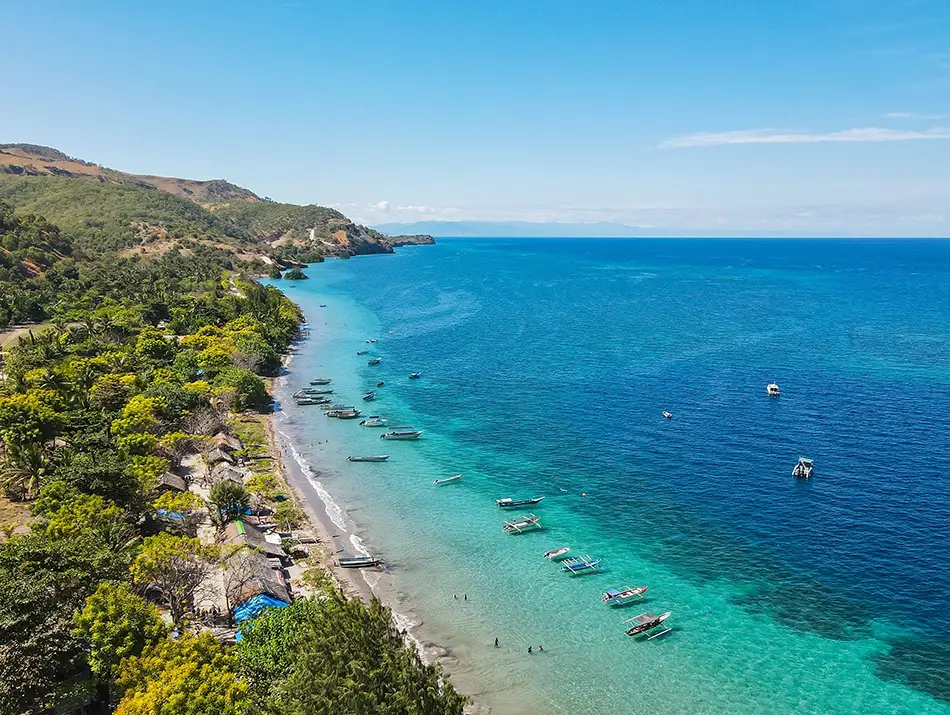
The Scene: Steep green mountains descend straight into clear coral seas.
Famous For: Atauro Island’s untouched reefs, highland coffee, Mount Ramelau treks, and colonial remnants in Dili.
Local Quirk: Many chew betel nut mixed with lime and tobacco — a stimulant that stains teeth deep red.
Unusual Bite: Batar daan — corn, mung beans, and pumpkin simmered into a simple, sustaining stew.
Dili, the seaside capital, blends Portuguese façades with market stalls and sea cafés serving strong local coffee. Beyond the coast, rough roads climb to misty highlands where families farm coffee under eucalyptus trees. Catholic shrines rise beside animist sacred sites, and murals still recall the struggle that led to independence in 2002
Divers reach Atauro Island for coral walls dense with fish. Hikers climb Mount Ramelau, the country’s highest point, for sunrise above cloud valleys. Roads remain few, but travel here still feels personal — guided by local drivers, family-run lodges, and stories shared over thick, sweet coffee.
Eswatini – Highlands, Traditions, and Lion Plains
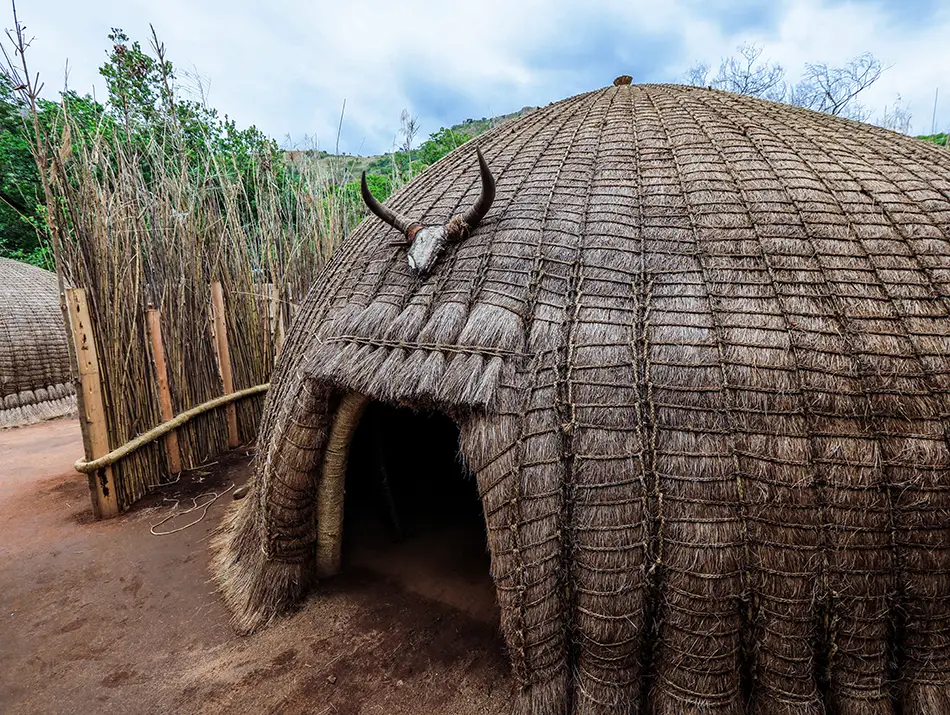
The Scene: Green hills fold into savannas where aloes bloom and antelope graze.
Famous For: Royal festivals, Swazi crafts, Mlilwane Wildlife Sanctuary, and glass made from recycled bottles.
Local Quirk: Greetings are often exchanged with a soft clap of the hands.
Unusual Bite: Sishwala — maize porridge served with stewed meat or pumpkin leaves.
Festivals remain central to national life. Each year, the Reed Dance fills the royal grounds with singing, drums, and lines of women carrying reeds for the queen mother, while the Incwala ceremony celebrates the king’s role in the harvest. Traditional weaving, carving, and music still shape work and community gatherings.
Wildlife parks lie close to everything. Hlane National Park shelters lions and white rhinos. Mlilwane offers cycling trails past zebras and open grassland. Mountain roads twist toward craft villages and viewpoints over the Ezulwini Valley, where the country’s landscapes and customs meet in one sweep.
Ghana – Where Castles Face the Tropic Sea

The Scene: Palm-lined beaches meet colonial forts above rust-colored fishing towns.
Famous For: Cape Coast Castle, kente weaving, highlife music, and cocoa — the bean used to make chocolate.
Local Quirk: Handshakes end with a finger snap — a warm sign of respect.
Unusual Bite: Fufu — pounded cassava and plantain dough served with spicy soup.
Along Ghana’s southern coast, white fortresses like Elmina and Cape Coast rise over fishing harbors once central to the Atlantic slave trade. Inland, Ashanti towns display gold weights, royal stools, and handwoven kente cloth still worn at ceremonies. Markets spill with color, and brass bands parade through streets on festival days.
Travelers can shift from history to nature in a few hours. Kakum’s canopy walkway sways above tropical forest, and Lake Volta’s ferries link quiet fishing villages. In Accra, beach bars serve grilled tilapia while highlife bands play late into the night.
And that’s the first fifty — a glimpse into the vast, unpredictable beauty of our planet. From remote corners to well-loved icons, each destination tells a story of its own, waiting to be lived in your own way. Remember, there’s no single right route through this world — only the one that calls to you.
Good to Know
For the most up-to-date information on safety and travel restrictions, refer to official government sources such as the U.S. Travel Advisory, France Diplomatie, or the UK Foreign Travel Advice.
If this journey sparked ideas or challenged your travel map, stay tuned for the next chapter of our global adventure: Best Countries to Visit in 2026, Part 2. Because the world of dream destinations is only just opening up.

